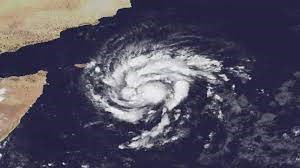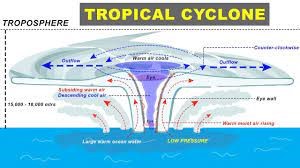Free Courses Sale ends Soon, Get It Now


Free Courses Sale ends Soon, Get It Now



Disclaimer: Copyright infringement not intended.
Context
Details
What reasons are causing Cyclone Hamoon to strengthen?
Seasonal Patterns in the North Indian Ocean, a Cyclone Breeding Ground
Types of Cyclones
Tropical Cyclones
Severe Cyclonic Storms
Very Severe Cyclonic Storms
Super Cyclones
Tropical Cyclone
How do cyclones form?

|
PRACTICE QUESTION Discuss the key meteorological factors contributing to the formation and intensification of tropical cyclones.(150 words) |
© 2024 iasgyan. All right reserved